I have currently designed a wireless power transfer circuit which is based on the ZVS principle and Royer circuit.
The issue I am currently facing is that the receiver coil is warming up a fair bit, depending on which variation of coil and resonance I use.
I have tried changing and tuning the capacitors on the receiver side (circuit can be seen here) close to, exactly and also with a detuning of about 30% more of the resonance set on the transmitter side. The coil on the receiver side is still heating up.
I think the problem is because of losses such as eddy currents, and maybe not the current tuning of the receiver, as I didn't take into account the tolerance of the film capacitors on the Tx side.
Is there a way to decrease the heating effect of the Rx side coil? How can one go about it?
I have tried using ferrite foil and they seem to help a little bit, but not too much. Would better tuning on the Rx side help with the heating issue, or is there something I am missing? Maybe changing the Rx design similar to this?
Extra information.
- Tx coil: 760308100110, 24µH
- Rx coil: IWAS3222CZEB190JF1, 19.6µH
- Measured Coupling factor K: 0.307 using LCR.
Edit 1:
The capacitors used for the Rx circuit are C0G.
I noticed that the closer I got the capacitor value on the Rx side to achieve similar resonance, the power usage stays the same, but more current is drawn with less voltage.
When I have only the Tx coil connected, i.e., without the receiver coil placed near it, I measured a switching frequency of about 112kHz. I am assuming this is because of the losses.
Case 1:
- Tx side-> 24µH, capacitor = 55nF, Fres = ~137kHz
- Rx-> coil->19.6µH, capacitor = 66nF, Fres = ~140kHz
- switching frequency = 112kHz
- Vin: 11.9V,0.7A
- Vout: 20V,0.2A
Case 2:
- Tx side-> 24µH, capacitor = 55nF, Fres= ~137kHz
- Rx-> coil->19.6µH, capacitor = 99nF, Fres= ~114kHz
- switching frequency = 125kHz
- Vin: 8.6V,0.96A
- Vout: 20V,0.2A

